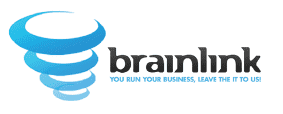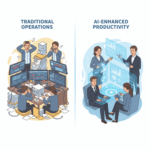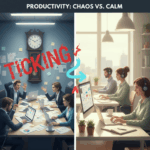NYC’s office market is at a turning point. The Comptroller’s new report asks a defining question for 2025: will the city fall into a doom loop of rising vacancies and stressed assets—or pivot to a boom loop powered by top-tier, tech-forward buildings and new-economy tenants?
Why this matters for NYC construction firms
For 30–200 employee contractors—especially those running projects and financials in Sage 300 CRE—the office market’s direction influences your bid pipeline, payment risk, and the mix of scopes you’ll see. The divergence is clear: Class A buildings with wellness, sustainability, and advanced digital infrastructure are winning; older Class B/C assets are struggling and considering conversion, though progress is slow.
Market realities to watch
– Persistent vacancies in legacy assets; near-full occupancy in best-in-class towers
– Flight to quality: premium rents for high-spec, amenity-rich buildings
– Owners investing in renovations, digital infrastructure, and tenant experience—or facing falling rents and distress
– Slow-moving conversions to residential/mixed-use as policy, financing, and design hurdles persist
Threats and opportunities for builders
Doom loop scenario:
– Fewer new builds and more competition for retrofit and TI work
– Payment delays as leveraged owners navigate refinancing and lower valuations
– Margin pressure and change-order friction
Boom loop scenario:
– Upgrades surge in Class A, with ESG, IAQ, smart systems, and tenant amenities
– Growth in adaptive reuse and complex TIs for tech, biotech, and creative sectors
– Stronger demand for MEP-intensive scopes and integrated delivery
The tech backbone: AI and digitization
Smart buildings are now core infrastructure. Expect tighter coordination with IT/AV, building operations, and cybersecurity. Owners want real-time project data—progress, compliance, and cost—delivered securely. That shifts more weight onto your digital project controls and field data capture.
The Sage 300 CRE angle
In a volatile market, strong back-office discipline is a competitive advantage.
– Cash protection: Tighten AR, WIP reporting, pay apps, and lien waivers inside Sage 300 CRE
– Change agility: Price and process change orders fast; link field events to commitments and budgets
– Labor/sub control: Track delays, compliance, and insurance at the contract line; standardize documentation
– Data clarity: Deliver timely, auditable reports to owners and lenders to keep funds moving
Action checklist for NYC contractors
– Focus your pursuit plan on Class A upgrades, ESG retrofits, and high-spec TIs
– Build an integration playbook with IT/AV vendors and building engineering teams
– Standardize mobile field capture for dailies, photos, and quantities tied to cost codes
– Strengthen prequalification of owners; negotiate terms to limit slow-pay exposure
– Use Sage 300 CRE dashboards for cash, WIP, and change-order velocity; escalate exceptions early
– Train PMs on closeout discipline to accelerate retainage release
What to watch in 2025
– Vacancy divergence by asset class and submarket (Midtown, FiDi)
– Refinancing cliffs, cap rates, and appraisal impacts on deal flow
– Conversion incentives and permitting timelines for office-to-resi/mixed-use
– TI allowances, energy rebates, and sustainability mandates influencing scope
– Adoption of AI-driven building ops and predictive maintenance
Bottom line
NYC is at a crossroads, not an endpoint. Whether the pendulum swings toward doom or boom, contractors that tighten financial controls, elevate retrofit capabilities, and integrate project data will outperform. If you want examples of how NYC firms are using Sage 300 CRE and outsourced IT to accelerate billings, reduce compliance headaches, and tie smart-building scopes to project financials, let’s talk.
Source: NYC Comptroller – NYC’s Office Market: Doom Loop or Boom Loop?











